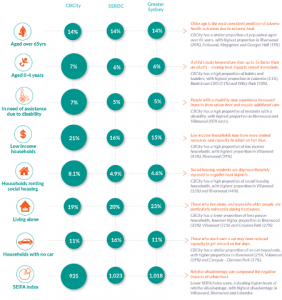Article
by Jen Guice, Associate Director, Cred Consulting
March, 2022
It’s hard to remember life before lockdowns, face masks and endless Zoom meetings, but it wasn’t long ago that I was on the other side of the world watching the local news from a small city in the USA witnessing Australia’s fiery summer. On the 4th of January 2020 the website, ‘World Weather Today’ reported that the top 10 hottest places in the world were in Australia. The hottest place on earth at that time was Penrith, in Western Sydney.

I wasn’t surprised though. It’s been 5 years since I wrote the “Cooling the City” Strategy for Penrith City Council. At the time I was writing the strategy, in 2014 the hottest days on average across the whole of Sydney were recorded at the Penrith Lakes weather station, with the highest temperature recorded that year being 44.9 degrees Celsius.
Since then, Western Sydney has continued to break summer heat records with Penrith reaching a sweltering 48.9 degrees Celsius this past summer. That’s a 4 degree increase in 6 years. This trajectory is alarming regardless of location. It is particularly so given the higher vulnerability to heat experienced in parts of Western Sydney, and the increased residential and infrastructure development projects planned for the area.
Extreme heat is a serious threat to communities. Over the past 100 years, extreme heat events have killed more Australians than any other natural hazard. Urban heat, and the associated elevated daytime temperatures, reduced night-time cooling and higher air pollution, has significant health and wellbeing impacts. This is particularly so for older residents who may also become more socially isolated for fear of leaving home during extreme heat.


